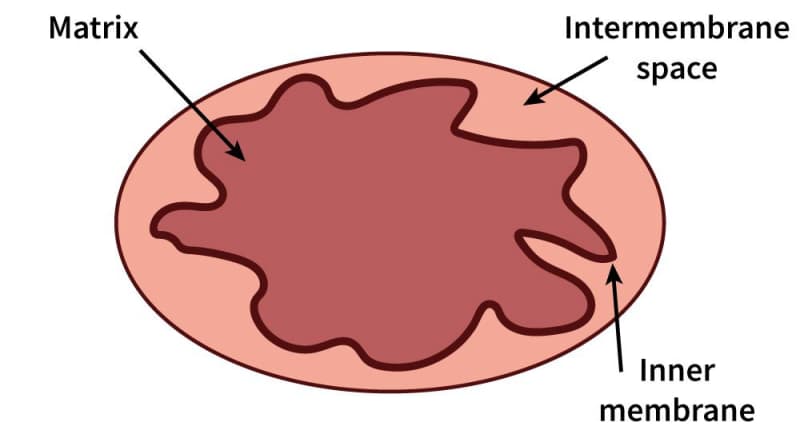The events of the citric acid cycle, electron transport chain and oxidative phosphorylation take place in mitochondria. Thus, before we begin our discussion of the specific reactions that occur in the electron transport chain and oxidative phosphorylation, it will be helpful to have an understanding of the physical structures of mitochondria that allow these processes to take place.
Mitochondria Structure
Mitochondria are a double membrane-bound organelle found in nearly all eukaryotic cells. It plays a critical role in the conversion of energy through metabolism and is composed of an outer and inner membrane that divide the structure into two distinct regions—the inner membrane space and the matrix. The enzymes that help catalyze oxidative phosphorylation are embedded in the inner mitochondrial membrane. The events of the citric acid cycle and oxidative phosphorylation take place in the matrix.

Figure 3.08: Mitochondrial Structure.
The outer membrane of mitochondria is largely permeable and allows many molecules to freely diffuse across it. The inner membrane, on the other hand, is highly impermeable, only allowing water, carbon dioxide, and oxygen to freely cross it. This membrane contains specific proteins that can act as transporters of specific molecules such as ATP and pyruvate. Because only specific molecules are allowed to cross the inner mitochondrial membrane, an imbalance, or gradient, can develop between one side of the membrane versus the other. Molecules that cannot freely pass through the inner membrane must be specifically transported in order to cross. We will see how mitochondria use gradients to produce ATP in oxidative phosphorylation.













